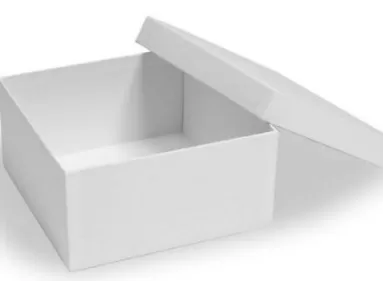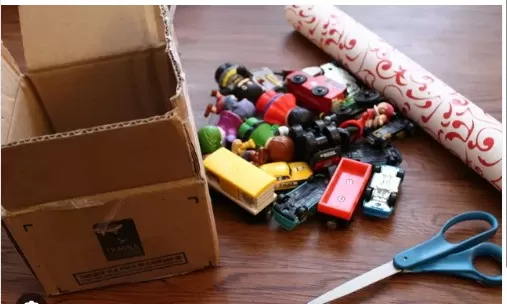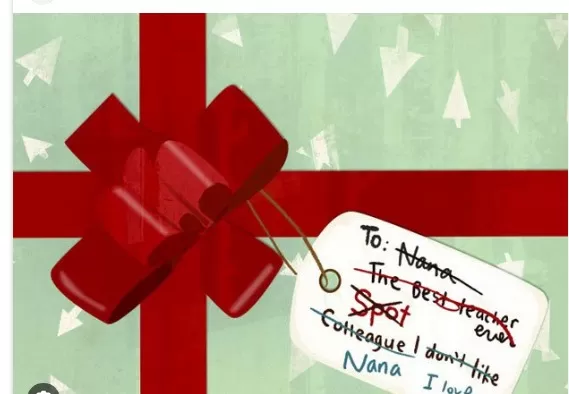Cardboard Box Reuse: 5 Creative and Sustainable Ideas. While technology continues to advance and provide new ways of doing things, some things remain steadfastly unchanged. One such example is the ubiquitous cardboard box. Surprisingly, despite advancements, approximately 90 percent of products shipped in the United States still rely on cardboard packaging.
However, once we’ve unpacked our items, we often break down the boxes and recycle them without much thought. But if we take a moment to consider it, the potential for cardboard is virtually limitless. It can be bent, cut, painted, wrapped, and shaped in countless ways. The possibilities for upcycled cardboard are vast and varied, extending far beyond children’s forts or plain storage containers. With a touch of creativity, cardboard can be transformed into unique and stylish creations that add charm and functionality to our lives.
Creative Thank-You Messages: Transforming Gift Boxes into Handwritten Postcards

In the world of gift-giving, expressing gratitude is a timeless gesture.
While a handwritten thank-you card is always appreciated, imagine adding a unique touch by repurposing the original gift box to convey your heartfelt message. With a little creativity, you can transform ordinary cardboard into delightful “postcards” that can be sent as is, eliminating the need for an envelope.
By repurposing gift boxes as postcards, you can infuse your thank-you notes with a touch of personalization and sustainability.
It’s a creative way to make your appreciation stand out and showcase your thoughtfulness to the recipient. Instead of letting the original packaging go to waste, why not utilize it to craft a memorable message?.
To create your own cardboard postcard, start by selecting a sturdy gift box that matches the occasion or resonates with the recipient’s interests.
Gently unfold the box, taking care not to damage the design or structural integrity. Lay it flat and cut out a rectangular or square shape, ensuring it’s large enough to write your message.
Once you have your postcard base, let your imagination run wild! Consider decorating the front with colorful markers, stickers, or even photographs that capture shared memories.
On the back, write your heartfelt words of thanks, expressing your gratitude in a way that truly reflects your personality.
The beauty of these postcards lies in their simplicity.
Unlike traditional cards, there’s no need for an envelope. Simply address the recipient’s name and mailing address on the back, affix a stamp, and send it on its way.
The postcard’s original box design will catch the eye of the recipient and add an element of surprise to their mailbox.
Re-gifting in this creative manner not only spreads joy but also promotes sustainability.
By repurposing gift boxes as postcards, you reduce waste and contribute to a greener planet. It’s a small but meaningful step towards mindful consumption and environmental responsibility.
So, the next time you want to express your gratitude, consider going beyond a conventional thank-you card.
Let the original gift box tell its own story by transforming it into a unique postcard. Your heartfelt message will leave a lasting impression and demonstrate your resourcefulness, while the recipient will appreciate the thought and effort put into this one-of-a-kind gesture.
DIY Napkin Rings: Stylish Dinner Circles from Upcycled Cardboard Tubes
Add a touch of elegance to your Dining Table with these charming napkin rings that can be easily crafted using a cardboard tube from a roll of plastic wrap or foil.
With just a quarter yard of your favorite fabric, you can create a set of eight rings. By securing the fabric to the inside of each cardboard coil using fabric glue or double-sided tape, you’ll have a beautiful and functional addition to your table setting.
To begin, gather a cardboard tube from a used roll of plastic wrap or foil.
These tubes are readily available and make for an ideal base for your napkin rings. Cut the tube into equal sections, approximately one inch in width, ensuring you have enough pieces for the desired number of rings.
Next, select your favorite fabric to wrap around the cardboard coils.
A quarter yard of fabric will provide more than enough material for eight rings. Choose a fabric that complements your table decor and reflects your personal style.
Floral patterns, solid colors, or even festive prints can add a touch of flair to your dining experience.
Using fabric glue or double-sided tape, secure the fabric to the inside of each cardboard coil.
Start by applying a small amount of adhesive to the end of the fabric and affix it to the inner side of the cardboard tube. Slowly wrap the fabric around the coil, ensuring it stays taut and free of wrinkles.
Apply additional glue or tape as needed to secure the fabric in place.
Once the fabric is securely attached, trim any excess material, leaving a neat finish.
You can customize the rings further by adding decorative elements such as ribbons, buttons, or small embellishments that match your chosen fabric.
Now, your DIY napkin rings are ready to grace your dining table.
Slide them around folded napkins, and marvel at the instant touch of sophistication they bring to your table setting. Your guests will be impressed by the unique and stylish accents that enhance their dining experience.
Not only are these dinner circles a cost-effective alternative to store-bought napkin rings, but they also contribute to Sustainable Living.
By upcycling cardboard tubes and utilizing fabric scraps, you reduce waste and give new life to materials that would otherwise be discarded.
So, unleash your creativity and embark on this simple DIY project.
With a cardboard tube, fabric, and a few minutes of your time, you can create elegant and personalized napkin rings that will make every meal a special occasion.
Stylish Plant Potting: Transforming a Cardboard Box into a Charming Planter

If you’re looking for a natural and creative way to give your plants a New Home, why not consider repurposing a simple cardboard box? With a few embellishments and a plastic bag with drainage holes, you can transform an ordinary box into a stylish planter that will contain your excitement for gardening.
To begin, find a cardboard box that suits the size of your plant and aligns with your aesthetic preferences.
It can be a small shoebox or a larger box depending on the plant’s needs. Gather some embellishments such as decorative paper, ribbons, or paint to add a touch of personality to your planter.
Start by decorating the exterior of the cardboard box.
Wrap it with decorative paper or paint it in vibrant colors to match your decor or garden theme. This step will instantly elevate the box’s appearance and make it a visually pleasing addition to any space.
Now, it’s time to prepare the box for planting.
Take a plastic bag, preferably a thick one, and poke several small drainage holes at the bottom. These holes will ensure proper water drainage, preventing your plant from becoming waterlogged.
Place the plastic bag inside the box, making sure it fits snugly and covers the entire interior.
Once the plastic bag is in place, add a layer of potting soil to the box, leaving enough space to accommodate the plant’s root system.
Gently remove the plant from its original container, carefully loosen the roots, and place it in the prepared box. Fill the remaining space with additional potting soil, pressing it lightly to secure the plant in place.
Now, step back and admire your handiwork.
Your plant is now nestled in a pretty new home, contained within a creatively repurposed cardboard box. Not only does it add a unique and eco-friendly touch to your gardening endeavors, but it also serves as a conversation starter when guests notice the charming planter.
Remember to water your plant as needed, taking care not to overwater.
The drainage holes in the plastic bag will help maintain proper moisture levels for healthy plant growth. Enjoy watching your plant thrive in its new stylish abode and appreciate the satisfaction of creating something beautiful from everyday materials.
So, the next time you need a new planter for your beloved plant, think outside the traditional pots and consider repurposing a cardboard box.
With a little imagination and a few simple materials, you can create a one-of-a-kind planter that showcases your creativity and love for nature.
Fine Motor Fun: DIY Shape-Sorter Toy for Children
Engage and develop your child’s fine motor skills with a delightful and educational shape-sorter toy.
This clever DIY project utilizes fluted dowel pins to create a fun and interactive way for little ones to learn about shapes and improve their hand-eye coordination.
To begin, gather the necessary materials for the toy.
You will need colorful shapes made from sturdy materials such as wood or plastic, fluted dowel pins, and a baseboard or box to assemble the toy on.
Start by cutting or purchasing various shapes in different colors.
Common shapes like circles, squares, triangles, and rectangles are ideal for early learning. Ensure the shapes are sized appropriately for little hands to grasp and manipulate easily.
Next, prepare the baseboard or box by drilling corresponding holes to fit the fluted dowel pins.
Make sure the holes align with the shapes you have selected. Space them out evenly, allowing enough room for the child to maneuver the shapes into place.
Insert the fluted dowel pins into the pre-drilled holes, ensuring they are securely fastened.
These pins will act as guides for the child to match and fit the corresponding shapes. The fluted design makes it easier for the child to align and slide the shapes onto the pins, providing a satisfying tactile experience.
Now it’s time for the child to explore and play.
Encourage them to pick up a shape, identify its corresponding hole, and slide it onto the appropriate fluted dowel pin. As they successfully match the shapes, they will develop their fine motor skills and enhance their spatial awareness.
This DIY shape-sorter toy not only promotes the development of fine motor skills but also introduces important concepts like shape recognition and problem-solving.
As children engage with the toy, they learn to identify and differentiate between shapes while improving their hand-eye coordination.
As with any toy, adult supervision is recommended to ensure a safe and enjoyable play experience.
Be sure to inspect the toy regularly for any loose or damaged parts and make any necessary repairs or replacements.
By creating this DIY shape-sorter toy, you provide an engaging and educational activity for your child while fostering their cognitive and physical development.
Watch as they delight in the challenge of matching shapes and celebrate their accomplishments, building confidence and a love for learning through play.
DIY Storage Totes: Stylish and Functional Organization Made Easy

If you’re in need of stylish storage solutions, look no further than these DIY storage totes.
Creating a trio of these versatile totes is simpler than you might think. With the help of gold screw bolts, spray adhesive, and a repurposed belt as a carrying strap, you can easily make these functional and fashionable storage options.
For a detailed step-by-step tutorial, visit Brit + Co.
To begin, gather the materials needed for this project.
You will require fabric covers for the totes, gold screw bolts, spray adhesive, and an old belt or strap to serve as the carrying handle. Choose fabric patterns and colors that match your personal style and complement your decor.
Start by measuring and cutting the fabric to the appropriate size for each tote.
The dimensions will depend on the desired size of the storage totes. Remember to leave extra fabric for folding and securing.
Using spray adhesive, apply a thin layer to the exterior of the tote, ensuring even coverage.
Carefully place the fabric onto the adhesive, smoothing out any wrinkles or bubbles. Repeat this step for all sides of the tote until it is completely covered in fabric.
The adhesive will securely hold the fabric in place.
Once the fabric covers are in position, it’s time to attach the carrying strap.
Cut a section of an old belt or repurpose a sturdy strap. Position the belt or strap across the top of the tote, ensuring it is centered and evenly aligned.
Using gold screw bolts, secure the belt or strap in place, creating a sturdy handle for easy transportation.
The completed storage totes are not only functional but also add a stylish touch to any space.
Use them to organize and store various items, from clothing and accessories to craft supplies or toys. These totes can be placed on shelves, in closets, or even displayed as decorative accents.
With a little creativity and some basic materials, you can create these DIY storage totes that are both practical and visually appealing.
They offer a budget-friendly alternative to store-bought storage solutions while allowing you to customize the design to suit your personal taste.
So, why settle for ordinary storage options when you can make your own stylish totes? Embrace your creativity, follow the tutorial provided by Brit + Co.
, and enjoy the satisfaction of organizing your belongings in a chic and functional way.
*The information is for reference only.